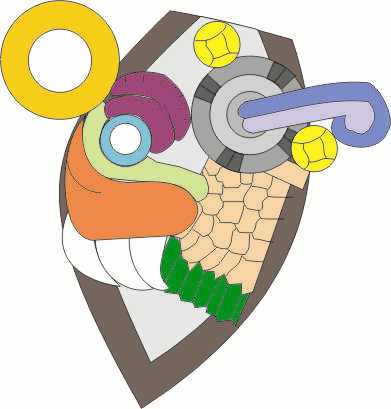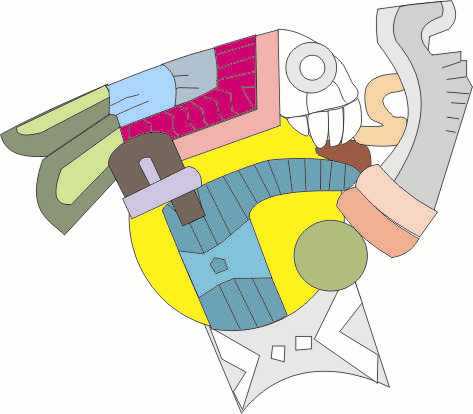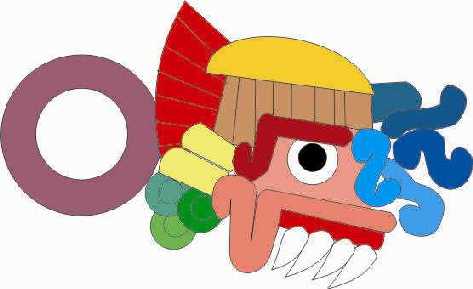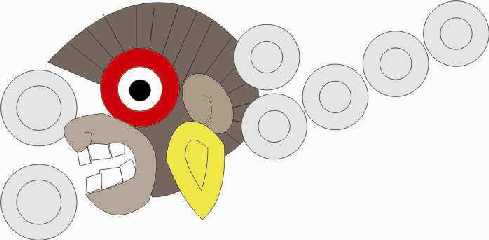- Index
- Dedication
- Authors
- Introduction
1 - Tonatiuh
2 - Cosmogonic Epochs
- The Five Suns
- The Jaguar Sun
- The Sun of Wind
- The Sun of the Rain of Fire
- The Sun of Water
- The Sun of the Earthqueakes
- The Four Cardinal Points
3 - Tonalli
Days
01 | 02 | 03 | 04 | 05
06 | 07 | 08 | 09 | 10
11 | 12 | 13 | 14 | 15
16 | 17 | 18 | 19 | 20
4 - Solar Rays
5 - The Serpentine Binary
6 - The Edge of the Stone
7- Aztec Cosmogony
- Official Details
- How the Aztecs measured Time
- The Aztecs Months
- Glossary
- Bibliography
- Images
- Back Cover
- Book in Word Format
- Book in PDF Format
The Four Cardinal Points
Each one of these directions was related to its own God and its own symbolism.
To the East, the God of Rain: Tlaloc, he who initiated life and fertility. The East was the region from where the travel path of the Sun was known to have its origin.
The West was related to Chalchihuitl, the Goddess who collected water in sacred vases, the arks of the treasure that encompasses life. The West is the region where the sun sets and where energy is also stored.
Mictlantecuhtli was found at the North and was known as the God of Death, Power and Force.
South was identified with Xochipilli, principality of flowers (as flowers and songs are the highest manifestations on Earth to reach the realms of TRUTH). The very center was represented by Tonatiuh.
The North

Ce-tepact (ce = one; tepact = obsidian)
Symbol of the North where the Place of the Dead is located, Mictlampa, as well as the Region of the Gods, Teotlampa, which is of a white color. The symbol of Ce-tepact is the emblem of Huitzilipochtli, the patron of the flowered wars.
Weapons were placed over the corpses of all noble warriors as attributes of the soul or as symbols of virtues earned with the elimination of the psychological aggregates.
This hieroglyph is also related to the first factor of the Revolution of Consciousness: Being Born; the work with the electronic solar power, also known as Kundalini in the West, which consists on the transmutation of the creative energies, an indispensable requirement for the integration of the BEING.
The East

Xiuhiotzolli (funeral attribute)
The sign of Xiuhuitzollil represents the East (where the Sun rises), called Tlalcopa, The Place of Light, or The Face of the Sun. All those who died in either war or the altar of sacrifice went to the house or the paradise of the Sun. These are the ones who fight against their own selves, who defeat temptations and eliminate each one of the inhuman aggregates they carry within. In the same fashion, those also have a special God called Teoyaomiqui (the deity of the perished enemies).
This cardinal point is also found in the Tlalocan, or the Paradise of Tlaloc, and comes to speak about the second Factor on the Revolution of Consciousness: Death, which is the disintegration of our psychological defects.
The South

Ce-Quiahuitl (ce = one; quiahuitl = rain)
The date 1-Rain pointed to the South, the region of Self-sacrifice, also known as Huiztlampa, the Place of Thorns or the Place of Showers, which gave place to the Xochiltlapan, the Place of Flowers.
Rain is a symbol of life, the element that gives life to all that is created. This third sign corresponds to the disinterested sacrifice we undergo for others and is represented below and to the left of Olin.
The West

Chicoace ozomatl (chicoace = seven; ozomatl = monkey)
Chicoace ozomatl (7-Monkey) corresponds to the West. The Mexicans referred to it as Cihuatlampa, the Region of Women. The Wise Priests of Anahuac have always affirmed the Cihuateteo or the Goddesses Who Died While Giving Birth, live in the occidental paradise, known as Cincalco, the House of Corn. These goddesses collected the Sun at the zenith, from where they took it to the perished warriors and from there, to where it sunsets.
It was also known as Tonaca Laquean (the place where the sun sets) or the Imiquian Tonatiuh, the place where the Sun dies.
The “seven” represents order, the longing for the ascendant life. This fourth cardinal point brings with it the equilibrium that must exist among the previous three to enable the integral transformation of our own selves.
